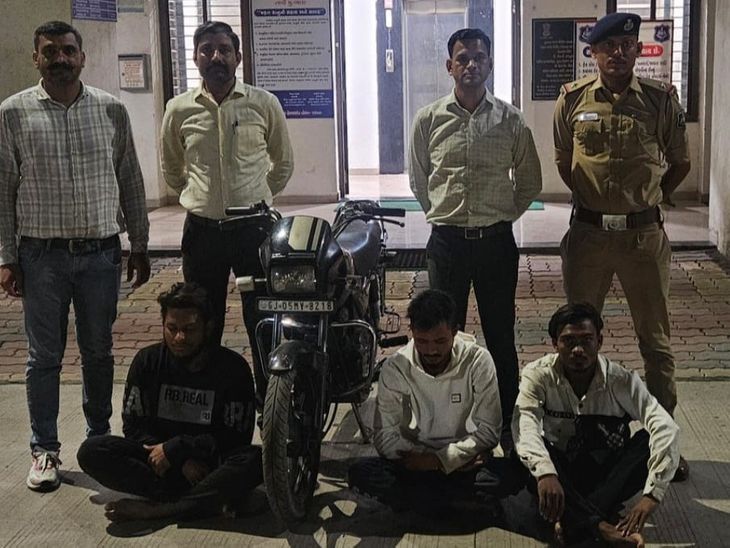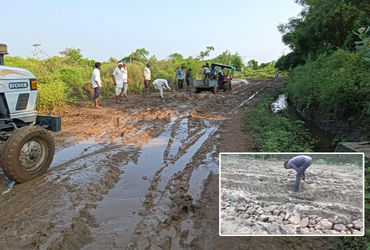વ્યારા પોલીસે ત્રણ આરોપીઓની ધરપકડ કરી
વ્યારા (બોટાદ) : વ્યારા પોલીસે શુક્રવારે વાહન ચેકિંગ દરમિયાન જૂના બસ સ્ટેશન પાસેથી ચોરીની સ્પ્લેન્ડર મોટરસાયકલ સાથે સાહીલશા અરમાનશા ફકીર (26), સમીર હશનશા ફકીર (28) (બંને રહેવાસી મગદુમનગર, વ્યારા) અને ફૈઝલ શેરખાન પઠાણ (19, રહેવાસી વાડીવાલા કોમ્પલેક્ષ, વ્યારા)ને ઝડપી પાડ્યા છે.
અટકાયત દરમિયાન પોલીસે આરોપીઓ પાસેથી નંબર GJ-05-MV-8218 વાળી સ્પ્લેન્ડર મોટરસાયકલ જપ્ત કરી છે, જેની અંદાજિત કિંમત રૂ. 15,000 છે. આરોપીઓ પાસે વાહનના કોઈ કાગળો કે આધાર પુરાવા ન મળાતા પોલીસે તેમના પર વધુ કાર્યવાહી કરી હતી. પોલીસ પૂછપરછમાં આરોપીઓએ મોટરસાયકલ ઉધના વિસ્તારમાંથી ચોરી કરી હોવાની કબૂલાત કરી છે.
આ કેસ ઉધના પોલીસ સ્ટેશનમાં નોંધાયેલા ગુના નંબર 11210047250 809/2025 સાથે સંબંધિત છે. આ સફળ કામગીરીમાં વ્યારા પોલીસ સ્ટેશનના પોલીસ ઇન્સ્પેક્ટર બી.જી.રાવલ, અ.હે.કો. નવરાજસિંહ જોરસિંહ, પો.કો. વિજયભાઈ, પો.કો. કલ્પેશભાઈ અને પો.કો. પ્રકાશભાઈ સહિતની ટીમે મહત્વની ભૂમિકા ભજવી છે.








